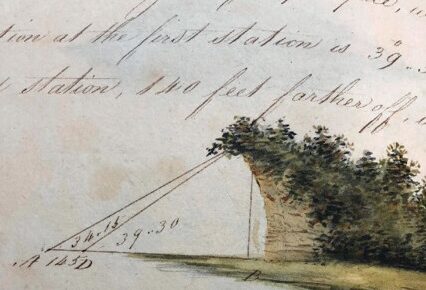
On the very day that Cambridge University Press listed my Coleridge and the Geometric Idiom: Walking with Euclid in its “Most Recently Published Books” announcement, I opened an electronic version of in The New York Times (nytimes.com April 7, 2023) and found, to my delight, an opinion guest essay written by the mathematician Sarah B. Hart, the author of Once Upon a Prime: The Wondrous Connections Between Mathematics and Literature. Her essay is about the connection between mathematics and literature. It demonstrates how writers such as Herman Melville, Arthur Conan Doyle, James Joyce, and Michael Crichton are replete with mathematical metaphors. She believes that mathematics can be at the very heart of literature, for the “universe is full of underlying structure, pattern, and regularity, and mathematics is the best tool we have for understanding it—that’s why mathematics is often called the language of the universe, and why it is so vital to science.” She adds, “Since we humans are part of the universe, it is only natural that our forms of creative expression, literature among them, will also manifest an inclination for pattern and structure.” She continues: “Good mathematics, like good writing, involves an inherent appreciation of structure, rhythm and pattern.”
I was delighted, if not gratified, to find in Hart someone who appreciates the connection between mathematics and literature. How timely her article seemed, for Coleridge and the Geometric Idiom also explores the connection between mathematics (specifically geometry) and literature. The book investigates Coleridge’s adoption of the geometric idiom when organizing his ideas as well as when writing his nature poetry. In particular, it examines Coleridge’s sensitivity to his culture’s attention to Euclid as well as to the various challenges to Euclidean geometry.
When Hart states that more holistic connections between mathematics and literature have not received the attention they deserve, she points out that our contemporary culture does not encourage a person to consider this possibility. From her perspective, “The idea that one would have to choose between mathematics and literature is, I think, something of a tragedy.” She argues that the two fields are inextricably and fundamentally linked. Hart believes that “these links can enhance enjoyment of both.” In particular, she acknowledges that in our more recent past, the connections between mathematics and literature have been regarded as offering distinct and opposite ways of understanding the world around us. She bemoans the fact that mathematics and literature are often “pitted against each other” and that for a long time students have been “forced to choose between studying either math and science or the humanities.” How true her observation is. I recall, for instance, that after completing the basic math in high school that once I arrived at university, I was given a choice of either taking courses in mathematics or philosophy. That was the end of my taking courses in mathematics. I was placed on a humanities track with a concentration in literature. And, obviously, those who selected a mathematics course, were, with the exception of being allowed to choose one or two electives, barred from most humanities courses because it was thought essential that these students become more and more specialized in their studies of the sciences. Humanities and the studying of literature were deemed irrelevant. How paradoxical this division was, for especially in the philosophy courses I was given, I was studying figures whose ideas were very much indebted to mathematics. For them no boundary between mathematics and the humanities existed. As Hart reminds her readers, when Plato founded his academy, he promoted an ideal curriculum that included both geometry and rhetoric. I hope that my study of Coleridge’s indebtedness and inclusion of geometry will add to the understanding that both disciplines are inextricably and fundamentally connected.
.
Latest Comments
Have your say!